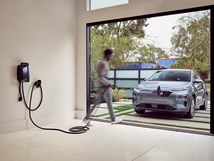NYC Approves Minimum Wage for Ride-Hailing Drivers
The New York City Taxi and Limousine Commission voted this week to create an hourly minimum wage for drivers of app-based ride-hailing services in the city—the first such measure in the U.S.
#regulations
The New York City Taxi and Limousine Commission (TLC) voted this week to create an hourly minimum wage for drivers of app-based ride-hailing services in the city—the first such measure in the U.S.
Under the new rules, drivers will receive at least $17.22 per hour after expenses such as fuel and tolls, whether or not they have a passenger. As a result, the commission estimates that the average pay of the 80,000 ride-hailing drivers in the city will jump by about $9,600 per year.
Ride-hailing drivers had been considered as independent contractors that don’t qualify for New York City’s $15 employee minimum wage and don’t receive benefits such as healthcare or paid vacations. Such drivers currently are paid an average of less than $12 per hour, net expenses.
The new rules are based on a formula that incorporates mileage, time and rider utilization rate (which currently averages less than 60%). In addition, drivers will receive a premium for carrying multiple passengers and rides that take them outside the city to compensate them for riderless return trips.
To help monitor and enforce the new policy, ride-hailing companies will be required to provide TLC with detailed fare information, more extensive trip data, and information about passenger wait times. The organization’s website also will provide a wage calculator for drivers.
The four largest ride-hailing companies in New York—Uber, Lyft, Gett/Juno and Via—account for about 75% of the local market, according to TLC. The companies claim that the new rules ignore current driver bonus programs and will lead to “higher than necessary” fare increases.
RELATED CONTENT
-
Jeeps Modified for Moab
On Easter morning in Moab, Utah, when the population of that exceedingly-hard-to-get-to town in one of the most beautiful settings on Earth has more than doubled, some people won’t be hunting for Easter eggs, but will be trying to get a good look at one of the vehicles six that Jeep has prepared for real-life, fast-feedback from the assembled at the annual Easter Jeep Safari.
-
When Automated Production Turning is the Low-Cost Option
For the right parts, or families of parts, an automated CNC turning cell is simply the least expensive way to produce high-quality parts. Here’s why.
-
Multiple Choices for Light, High-Performance Chassis
How carbon fiber is utilized is as different as the vehicles on which it is used. From full carbon tubs to partial panels to welded steel tube sandwich structures, the only limitation is imagination.








